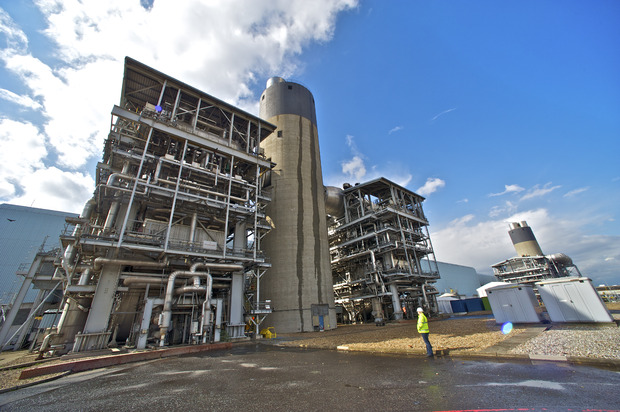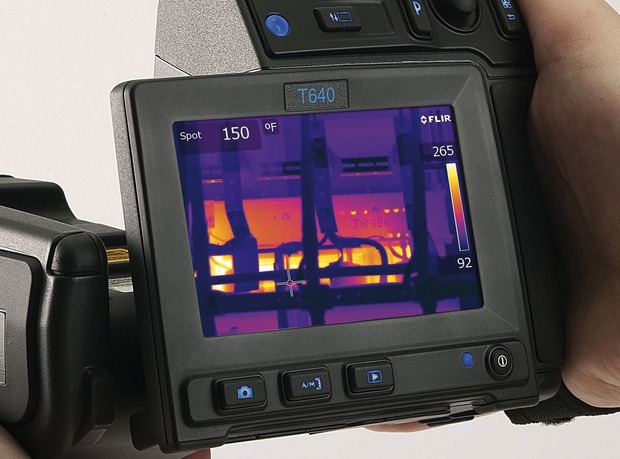Sensing safety
25 Jul 2012
?Recent advances in the field of sensor technologies are proving timely for process operators in the oil & gas, chemicals and power sectors - now under increasing pressure to ensure the safety of their facilities.
Relatively few process chemicals are as toxic as hydrofluoric acid, which is used, for example, as a catalyst in petroleum processing, and must be carefully managed and controlled.
Accurately analysing how much HF is re-circulating within the process contributes significantly to increasing the efficiency of a refinery because it can improve crude stock yield and associated costs.
Early approaches to HF monitoring involved taking manual samples and analysing them in a laboratory. This approach, however, even when carefully executed, potentially exposed lab workers to severe toxins, and its accuracy was limited.
And while more recent techniques can produce more accurate readings, their adaptation for real-time online monitoring is complex and costly.
These issues prompted Valero Energy Corp. to recently adopt ‘ACA.HF advanced alkylation’ measurement technology at seven refineries. The
Invensys Operations Management (IOM) system is being used to monitor and measure HF levels in real time by analysing differential responses from online sensors.
The patented technology is designed to reduce the possibility of accidental exposure, thereby lessening the risk to employees and curtailing the potential for environmental hazards.
The HF alkylation measurement system “can openly communicate with a larger refinery and enterprise-wide control, information and decision-support system to provide real-time data and analysis,” said Maxie Williams, vice president and enterprise client executive, IOM.
Gas imaging
Another real-time system for detecting harmful substances is in use at Borealis, which has switched to using an optical gas imaging camera to detect potentially dangerous gas leaks at its plant in Stenungsund, Sweden.
Within the low-density polyethylene (LDPE) production process highly flammable ethylene is converted into polyethylene in a high-pressure polymerisation reaction.
Borealis previously used gas ‘sniffers’- devices that measure the concentration of a certain gas in one single location and generate a concentration reading in parts per million. The company moved to using an optical gas imaging camera, a GF306 device from FLIR Systems, in part because it allows operators to detect gases in real-time visually.
“Whereas sniffers just give you a number, an optical gas imaging camera allows you to detect gas leakage anywhere within the field of view of the camera,” an operator at Borealis explained. “This speeds up the inspections considerably.”
The optical gas imaging camera has enabled Borealis to do a quick scan at every start-up: process operators are able to scan approximately 80% of the entire plant in about 30 minutes.
According to FLIR Systems, to do the same leak detection task with gas sniffers would need a team of ten people working for 48 hours.
Barking Power
Safety was a major consideration for Barking Power Ltd in opting to install wireless acoustic sensor technology to help identify potential problems at its combined cycle gas turbine (CCGT) power station (pictured) in London.
The company, operated by Thames Power Services, has installed Emerson’s Rosemount 708 wireless acoustic transmitters help plant personnel identify failed steam traps, leaking valves and boiler tube leaks, avoiding substantial costs for lost steam and feedwater as well as lost revenue from plant downtime.
Previous manual monitoring was time-consuming and failed to indicate when or why a release occurred, increasing the chances of a safety, regulatory, or environmental incident. The new wireless devices enable precise monitoring and alert operators when valves have opened for a single second.
Barking Power Station is one of the largest independently-owned generating plants in the UK, capable of generating 1,000MW of electricity - about 2% of the peak electricity demand in England and Wales.
To remain competitive in the UK’s deregulated power generation market, plant engineers need to maximise plant availability and efficiency, which in turn help reduce overall unit generating cost.
“Improving process performance is all about understanding what is happening around the plant and being able to respond quickly to any problems,” explained Ian MacDonald, senior control systems engineer, Barking Power.
“Emerson’s Smart Wireless technology enables us to introduce additional measurement points quickly and cost effectively at any location, so we can gather additional information to identify potential faults.”
To improve identification of failed steam traps and problem valves, Barking Power installed 35 of Emerson’s wireless acoustic transmitters across the plant. Should a steam trap fail or a small leak begin, an acoustic device transmits changes in sound and temperature which are configured to alert operators of a potential problem.
Soon after the implementation, the new devices detected a leak from a high-pressure, super-heater steam trap, which would have cost £1400 for every 24 hours of lost operation.
The plant installed 15 additional acoustic transmitters to monitor other problematic areas, including vent valves that can stick during start-up and pressure relief valves that don’t seat correctly.
The wireless acoustic transmitters have also been installed to identify leaking boiler tubes. These leaks not only reduce performance but also waste large amounts of costly boiler feed water, which is demineralised and chemically treated to help prevent corrosion.
Data is fed into the plant’s existing Emerson Ovation control system, where noise levels can be trended to identify gradual changes. Repairs can then be scheduled during normal off-times to maintain maximum plant availability and avoid forced downtime.
Using the wireless networks already in place, additional devices can be added at much lower cost than if they had to be wired-in individually. This provides Barking Power with additional opportunities where monitoring was previously cost-prohibitive - for example, identifying blockages in venturi eductors.
“Having already installed Emerson’s Smart Wireless THUM adaptors for access to stranded HART diagnostic data in traditional field devices, we were very familiar with Smart Wireless technology and confident about using it in other applications,” said MacDonald.
“The mobility and flexibility of the battery-powered wireless devices also allow us to run trials and move devices to different areas without having to lay temporary cables,” he added. “As a result, we can spot early problems and improve response to malfunctioning equipment - enabling better planning and utilisation of maintenance resources.”





